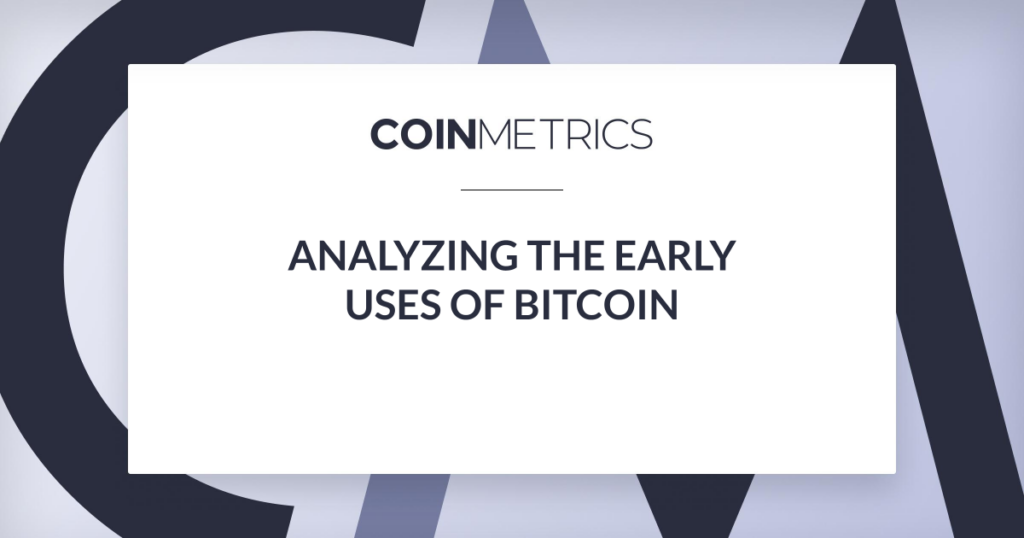This feature is adapted from Antoine Le Calvez’ presentation at the MIT Bitcoin Expo 2020.
Since its inception in 2009, Bitcoin triggered many discussions around its raison d’être. Conflicts between different points of view of what Bitcoin is and should be spanned years and tore many communities apart. Hasufly and Nic Carter cataloged the many different Bitcoin narratives in Visions of Bitcoin.
In this piece we aim for something a bit different than the usual discourse on this topic: instead of approaching Bitcoin as a political, philosophical or technical project and going top-down, we start by observing the history of what happened on-chain to gain insight into how Bitcoin’s usage has evolved over time.
Early Exchanges
Bitcoin launched in January 2009 to little fanfare. Before July 2010, it only saw a paltry eight thousand transactions (excluding protocol-mandated mining transactions). But then, within two weeks, Bitcoin did more transactions than it did in all its previous history.
This change is also visible when looking at a more subtle indicator: what was the precision of the amounts being sent? In that same period, the number of transactions specifying oddly precise amounts of bitcoin to be transferred increased dramatically.
A few events led to the sudden increase in Bitcoin usage in July 2010. First, Bitcoin had its Slashdot moment – the release of Bitcoin version 0.3 was picked up by the popular tech news outlet. A few days after, MtGox opened its doors to traders and users began using more decimals in their transactions to reflect the fact that they were transacting in Bitcoin, but with USD amounts.
As Bitcoin’s price increased in mid-2011, more and more outputs began using all the available decimals. What this tells us is that Bitcoin’s first growth spurt was directly related to the emergence of MtGox, the first marketplace allowing the exchange of BTC for US dollars.
SatoshiDice
The next interesting growth spurt comes from the rise of SatoshiDice in April 2012. It allowed users to bet bitcoin on the roll of a dice, with different odds, by just sending bitcoin to a specific address (for example, send 1 BTC and get 2x back with a 48% chance). Its key innovation was to use a provably fair protocol to show that it wasn’t defrauding its users with a bad random number generator.
In a matter of days after its launch, SatoshiDice grew to represent 40% of Bitcoin’s daily activity.
SatoshiDice represents a compelling argument for Bitcoin as a cheap and trustless payment network. Playing the same game with bank wires would not only be illegal, but also painfully slow. Its popularity died off due to many reasons, some regulatory (it had to ban US players), some business related as it changed ownership several times and some technical as raising transaction fees made using it less interesting to users.
Bitcoin As a Collectible
An insight into one of Bitcoin’s usages can be gained by looking at its … non-usage. In 2011, Bitcointalk user Casascius started selling physical coins that could be loaded with real bitcoin. Over time, several denominations and form factors became available, from 1 BTC brass coins to 1,000 BTC pure gold coins. As the list of addresses born by these coins was made public, anyone can track the amount of coins held in such coins.
More recently, Bitcoin China (BTCC) launched another set of physical coins, having the particularity of being funded directly by block rewards. Here too, the list of addresses is known, allowing tracking.
Combining Casascius and BTCC coins, we can see that around 50k BTC (2.5% of all supply) are still held in physical coins to this day.
Going further than the narrow scope of physical coins, looking at Bitcoin’s supply through the lens of the last time of activity yields another insight concerning Bitcoin’s status as a collectible: more and more of the supply remains untouched for long periods of time. This tends to validate the store-of-value hypothesis of Bitcoin’s usage.
Conclusion
This analysis confirms the adage that “Bitcoin is multitudes”. Whilst the theoretical visions of Bitcoins are often painted as opposing one another, on-chain data shows that they often co-exist. At the same time as SatoshiDice was making use of Bitcoin’s cheap payments, collector physical coins were being created.
Bitcoin’s usage has evolved over time and will undoubtedly keep evolving. On-chain data gives meaningful insight into how Bitcoin is being used, and provides an important piece of the puzzle alongside theoretical and philosophical discussions.



